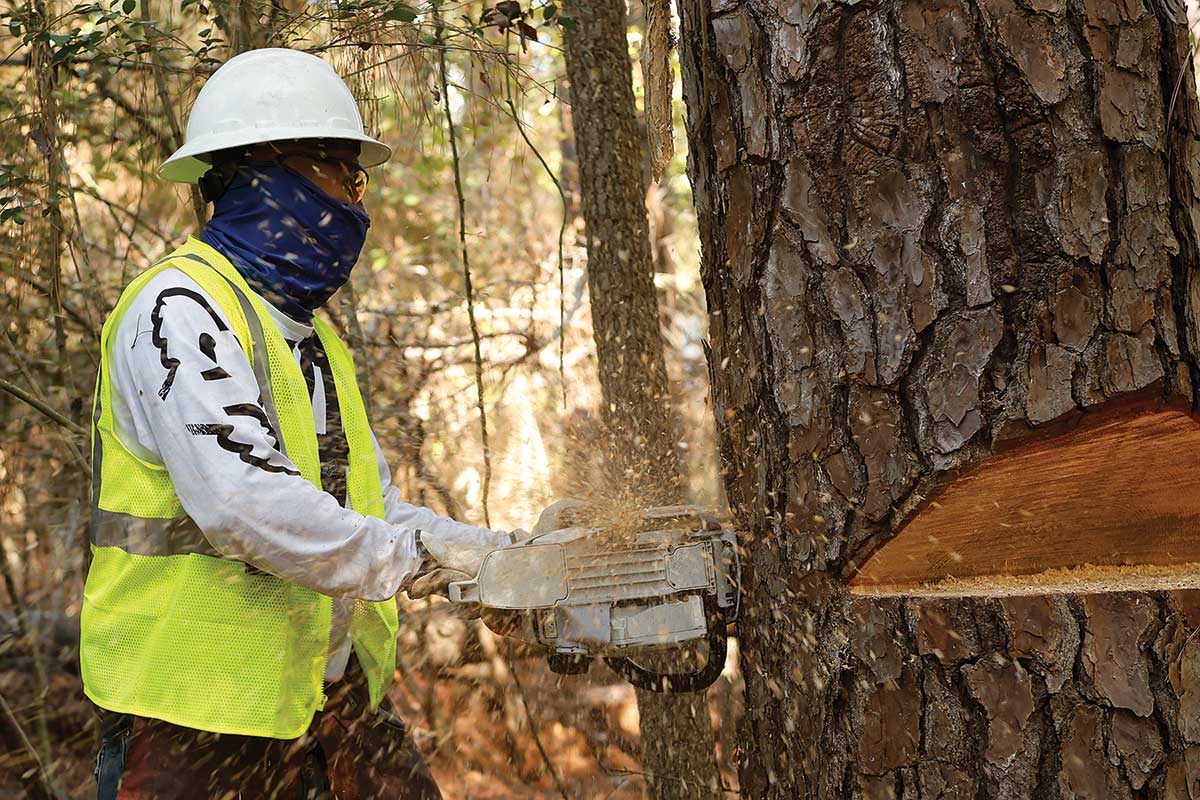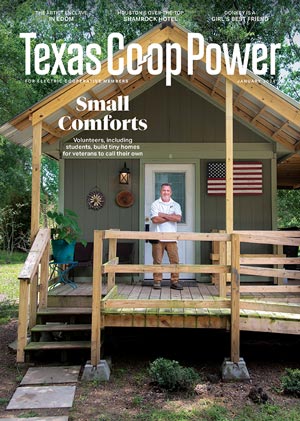Droughts are a natural occurrence, and East Texans are familiar with the damage that comes with a lack of rain.
Lakes and rivers are noticeably lower during a drought, and shallow ponds and small streams may even completely dry up. Yards that were once green and lush turn brown and crunchy. Trees may be resilient at first but they, too, can become stressed and die during a drought.
Janay Jones, Sam Houston Electric Cooperative utility forester, said stressed pine trees become susceptible to beetle damage, which can kill a towering 80-foot-tall tree. Healthy pine (and even hardwood) trees can be infected by beetles and die in a matter of months.
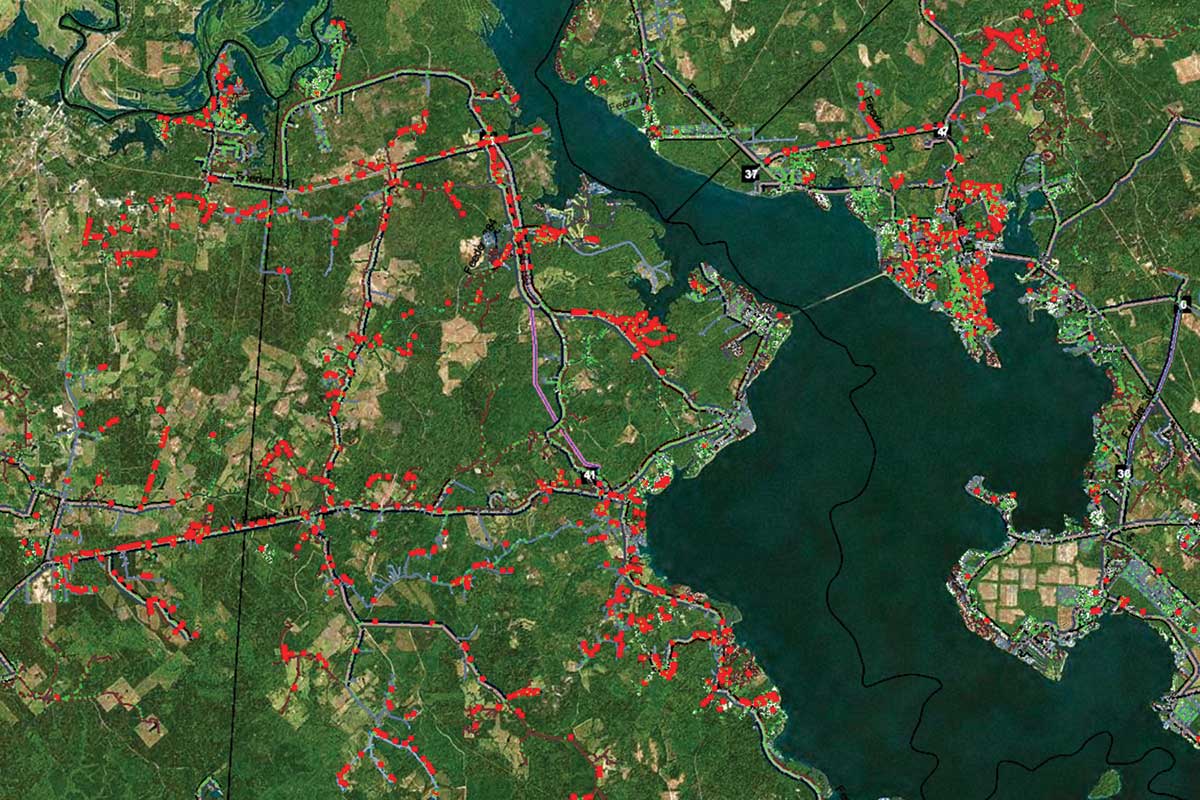
Planners drive each segment of line and mark dead trees with red dots on a digital map. Cutting crews change the dots to green after dead trees have been cut down.
“Beetles are always in and around trees,” Jones said. “They are part of the ecosystem. But, during droughts like we had in part of 2022 and in 2023, the trees become stressed and susceptible to dying from the beetles.”
The dead trees are potentially a large threat to the reliability of Sam Houston EC’s vast distribution system. The Co-op maintains more than 6,500 miles of power lines and the trees near them. The robust program is a primary reason why the Co-op’s distribution system maintains high reliability year-round.
In addition to maintaining a 10-foot clearance on each side of more than 177,000 power poles, the Co-op also identifies hazard-ous trees that are likely to fall on power lines. Sam Houston EC’s right-of-way and dead tree maintenance program is nationally recognized for improving service reliability.
In an average year, the Co-op cuts down about 7,000 hazard-ous trees that threaten power lines and outages. However, Jones said, the Co-op had contractors cut 25,000 trees to keep the system healthy in 2023.
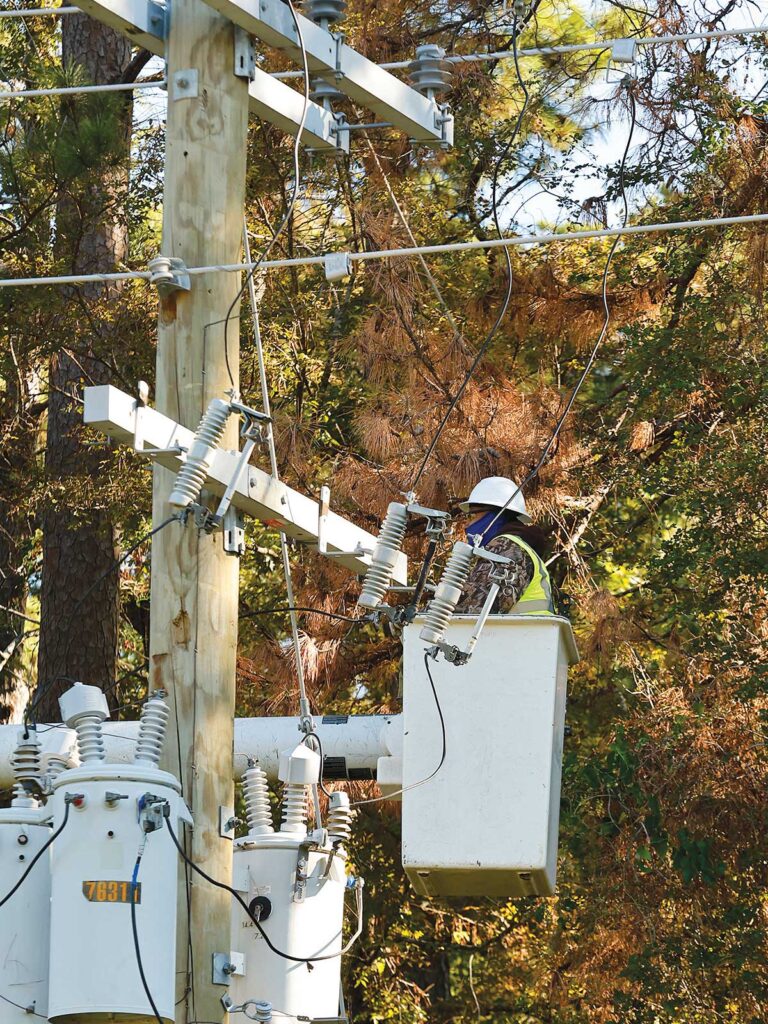
A professionally trained tree cutter maneuvers a bucket to cut dead trees near distribution lines in Onalaska in November. It was the second time that portion of the system was cut in 2023.
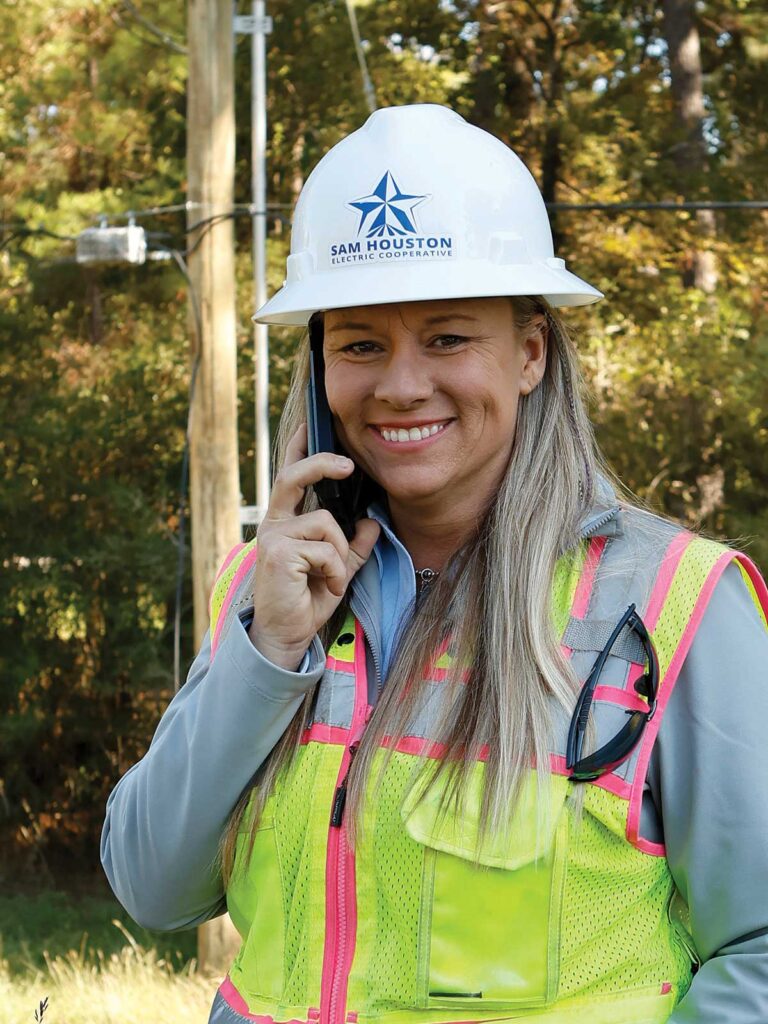
Janay Jones, a utility forester, speaks with many Sam Houston EC members about hazardous trees on the Co-op’s lines.
The Co-op cut 11,000 trees in 2022 as the drought set in and magnified the hazards posed by trees already stressed from the February 2021 winter storm. Another 25,000 hazardous trees are expected to be cut in 2024.
“There are a lot of reasons to cut the trees,” Jones said. “They can impact our equipment, but these trees can also impact [members’] personal property and comfort as well. They can damage property, utility lines, other utilities, cause fatalities or disable access to a road or our right-of-way.”
Cutting 25,000 trees comes at a cost, but Sam Houston EC uses a systematic approach to canvas the system—approximately the size of Connecticut—to mitigate the financial impact. Planners start on the western edge of the system and drive along each segment of line while plotting trees to be cut down. They move east throughout the year. In 2023, one-third of the system was cut twice just to keep pace with the dying trees.
“We are here to keep the lights on, but we want to do it at an affordable price,” Jones said. “Using the marked trees from planners, crews cut anywhere from 100 to 150 trees a day. That comes out to about 10–15 trees a day for a single crew. If we base the cutting schedule on phone calls and tickets made, a single crew may waste time by driving across the system each day. They may only cut three to five trees a day that way.”
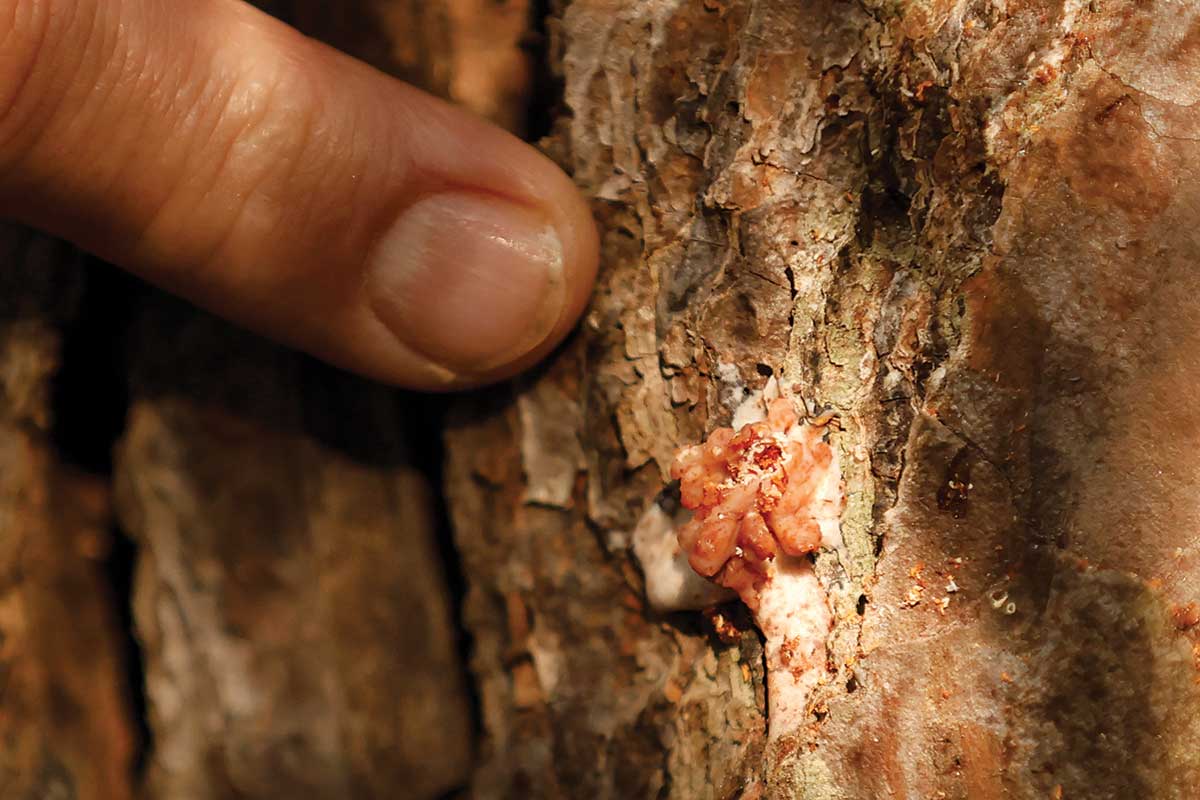
A pitch tube is an indication of Ips beetles.
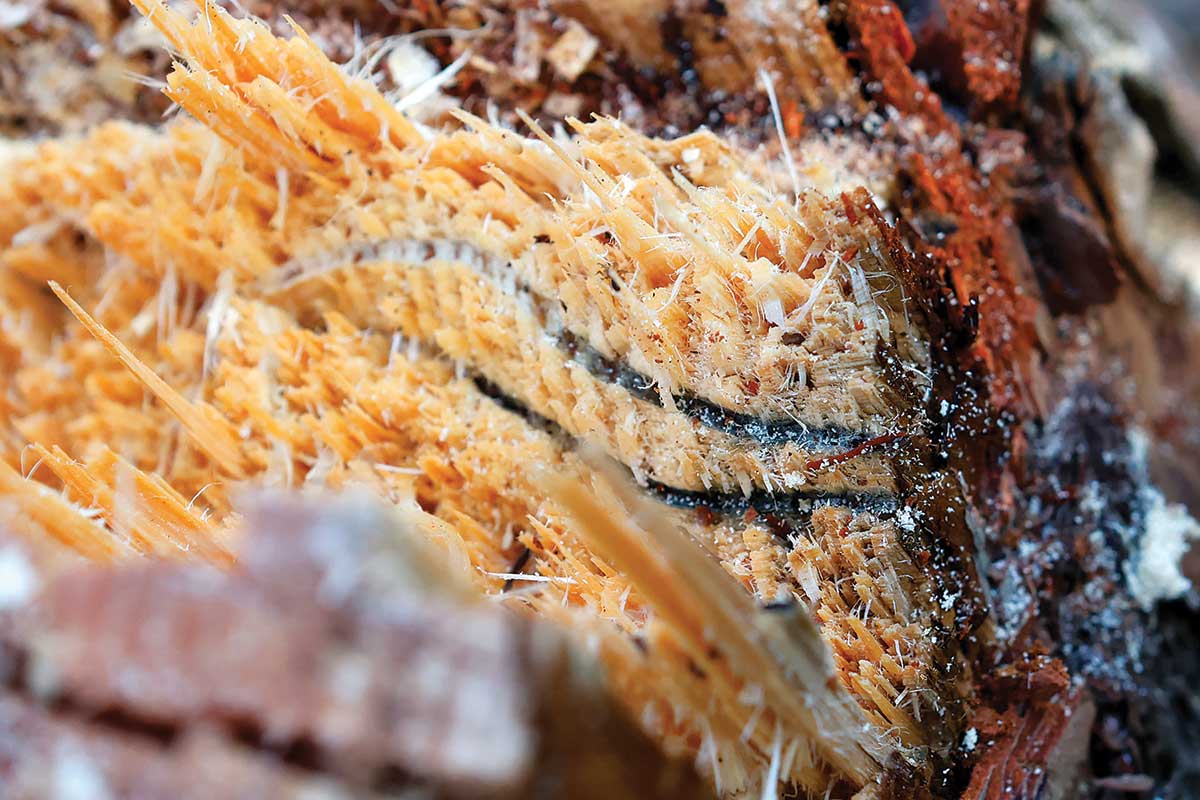
Black trails indicate where beetles entered a tree.
Professional tree-cutting crews follow behind the planners seven to 10 days later.
“It is astounding how many trees are dying and how fast they are dying,” Jones said. “We had a planner go through a line and then, a week later, when the crews went to start cutting, one property had six dead trees. They were green the week before.”
Sam Houston EC wants and needs the trees to be cut at a rapid rate but not at the cost of quality or safety to property or the tree cutters. Each crew has received special training and accreditation to work near power lines, and they’re very familiar with the Co-op’s system.
“Some crews have been working on our system for 20 years, and they have cut hundreds of thousands of trees for us,” Jones said. “Cutting dead trees is one of the most hazardous jobs, so we do safety audits to ensure they are doing their job safely, and all our crews have good equipment.”
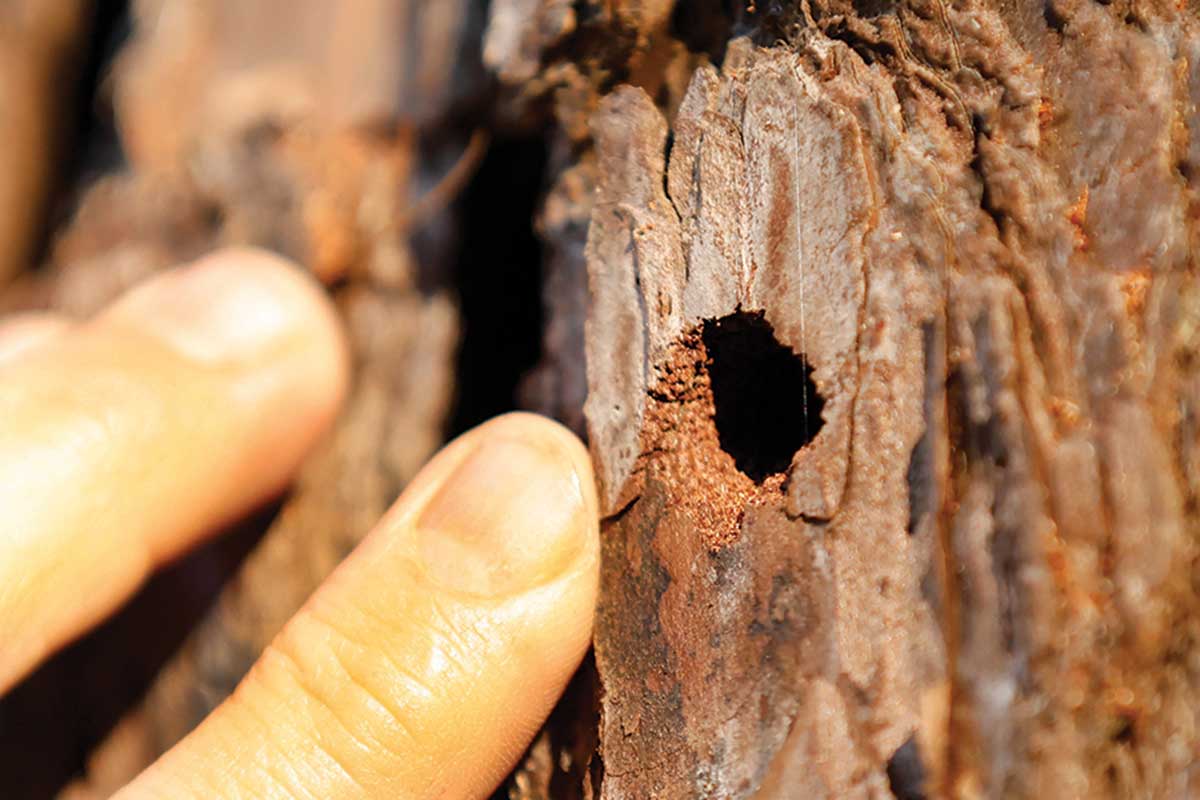
A hole in the bark of a pine tree where a beetle entered a tree. Due to a drought, tens of thousands of pines were stressed and died when beetles entered the trees.
While the drought has taken a toll on the region, it is nowhere near as damaging as the 2012 drought, when the Co-op had to cut more than a quarter-million trees.
The systematic approach is working to keep pace with the dying trees. Dead trees do not become hazardous in a matter of weeks or even a few months. The Co-op is aware of the situation and will continue to cut the dead trees until the drought is behind us and the trees begin to recover.
“We do not want our members to take it upon themselves to cut down trees,” Simon said. “If they are near a power line, please stay away. Cutting trees near power lines is very dangerous, and only trained professionals should attempt it.”
